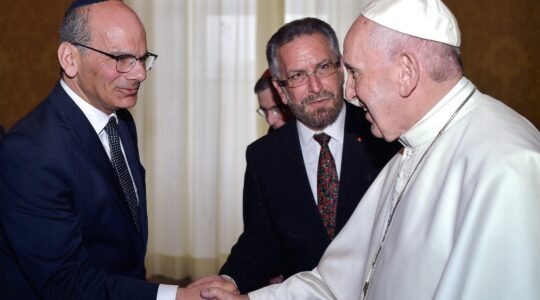NEW YORK (JTA) — For the last 3 1/2 years, I have been working intensely with our leadership to re-engineer United Synagogue and make it a relevant, effective instrument for strengthening and expanding Conservative kehillot, congregations. A major piece of this work has involved USCJ’s finances, which have become demonstrably more stable and transparent, and which we have set firmly on a course for future growth.
So imagine my dismay when I read JTA’s dramatic headline last week touting its apparent discovery of a “budget hole” representing United Synagogue’s “latest woe.” I may have been less troubled by this misleading portrayal had our international president, Richard Skolnik, and I not spent well over an hour explaining the actual situation to the JTA reporter writing the story.
It’s no secret that Conservative Judaism and its institutions are in the midst of a difficult transformation as they address the demographic and cultural realities of the 21st century. As we mark our centennial year, United Synagogue is certainly not immune from these challenges. Indeed, we have dubbed our centennial celebration the "Conversation of the Century" precisely because we want to facilitate a bold, honest discussion about where we need to go in the years ahead.
Moreover, three years ago our organization undertook a deep, sometimes painful process of self-evaluation. We acknowledged our shortcomings, collaborated with our critics and developed a visionary, aggressive plan for a new United Synagogue focused on one central mission: renewing our congregations as beacons of the vital Jewish center that is Conservative Judaism.
Far from gathering dust on a shelf, our strategic plan has led to a major restructuring of our organization. We’ve aligned our budget and staff around three core areas vital to the health of our kehillot: leadership development, learning, and engaging the next generation in Jewish life. This restructuring hasn’t been easy — and at times it’s been expensive.
Which is where we come to the distorted impression conveyed by the recent article.
As anyone who has turned around a major organization knows, one cannot do so without spending money. Our leadership made a careful, considered decision two years ago to use some of our financial reserves in order to offset the costs of our transformation. There were compensation costs involved in trimming and restructuring our staff. There was an unforeseen one-time expense involving a judgment in a lawsuit brought against us nine years ago.
Finally, there were investments we needed to make to begin focusing on our core mission — and to do so without adding to the costs borne by congregations. (In fact, we have not raised base dues for five years, and only in December asked our kehillot to approve a small increase, which they did.)
We were able to resolve our outstanding business issues and remain fiscally sound precisely because our leadership had wisely put aside money in reserve. We used some of this money just as it was meant to be used — for extraordinary “rainy-day” expenses outside the normal course of business. Indeed, a recent independent audit report declared us fiscally sound.
The state of USCJ’s budget is no secret. Look at our website, www.uscj.org, under “About Us.” You’ll see a budget tab that offers a complete audit report and budget from our 2011-12 fiscal year. And in a few weeks, once our board approves our current audit report, we’ll post our latest budget information for fiscal year 2012-13. This reporting reflects how seriously we take the pledge we made two years ago to become a more transparent organization.
Still, it’s fair to ask: What’s the plan for the future? Will we keep using reserve funds to cover operational deficits? Of course not. We have been putting our financial house in order precisely to build a sound base on which to grow for the future. With our extraordinary expenses behind us, the deficit will be substantially smaller this year, and we plan to eliminate it completely over the next two years.
One way we’ll do that is by expanding the portion of our budget that comes from philanthropy. It’s a major shift for our organization, but we are confident we have the plans and personnel in place to meet our goals.
We’ll also continue an aggressive initiative begun two years ago to streamline operations by identifying greater efficiencies and new ways to contain costs.
So forgive me if I sound a little peeved at yet another article foretelling the demise of United Synagogue. It’s just that we have come a long way from the crisis of three years ago, but some in the media remain wedded to a narrative of decline.
We are well aware that USCJ still has big hurdles to cross before we fulfill the vision we’ve set out to achieve and become the dynamic, effective organization that our constituents deserve. We also realize that it’s perfectly legitimate to hold us up to scrutiny. It would be refreshing, though, and perhaps more constructive, if those in the media would let go of what has become a stale narrative; if they would stop turning to the same critics for pithy quotes; and if they would take the time to find out what’s really happening at United Synagogue today.
It wouldn’t be a perfect story, but it might be an accurate one.
(Rabbi Steven C. Wernick is executive vice president of the United Synagogue of Conservative Judaism.)
(Editor’s note: JTA stands by the accuracy of its report on the United Synagogue’s budget deficit.)
JTA has documented Jewish history in real-time for over a century. Keep our journalism strong by joining us in supporting independent, award-winning reporting.





